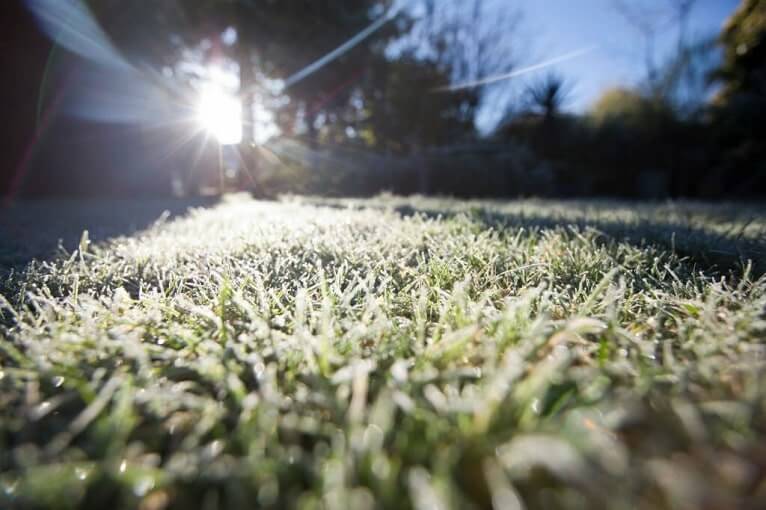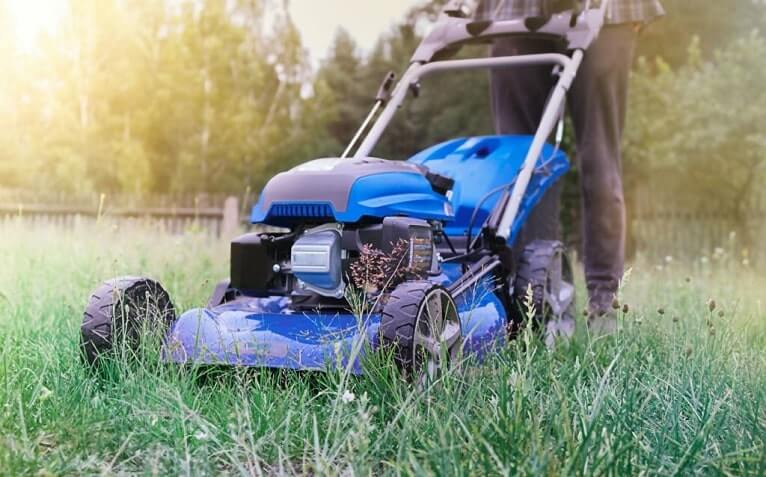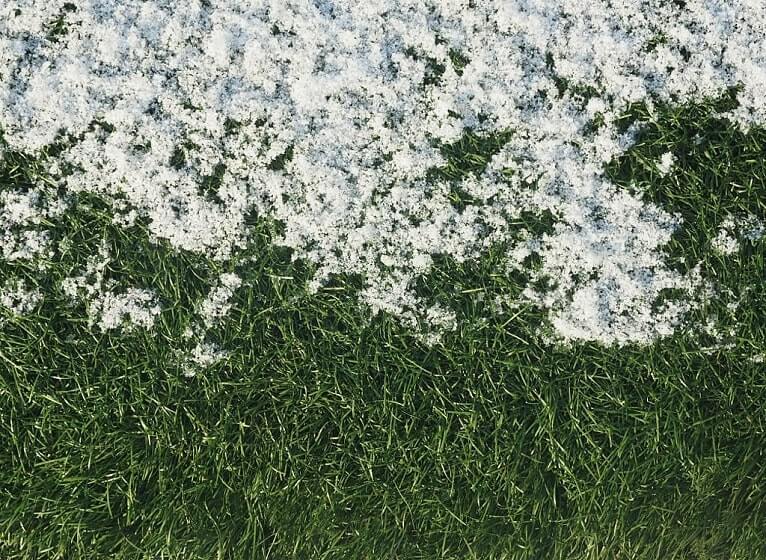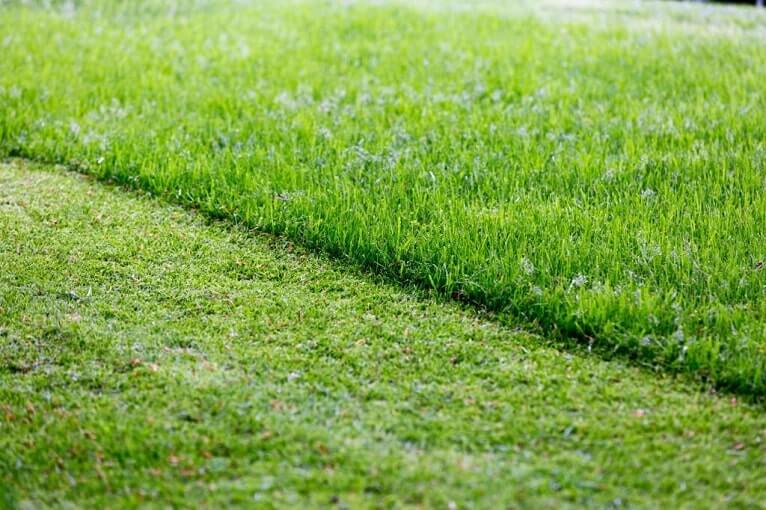
The winter is here. As you dispose of fallen leaves on your lawn and make it visible again, you may be thinking “When is it too cold to mow the lawn?”
Everyone knows that a beautiful and healthy lawn requires care and attention. It’s obvious during the summer that your lawn has to be mowed, but do you know how to maintain your lawn in the winter and when it’s too cold to mow the lawn?
You shouldn’t mow your lawn if your grass is frozen or when the temperatures are consistently below 40 degrees Fahrenheit or approximately 4.5 degrees Celsius.
Below 40 degrees Fahrenheit/4.5 degrees Celsius the grass on your lawn will stop growing almost completely and mowing your grass when it’s frozen can do a lot more damage to your lawn than the benefits from it.
With that said, you can still mow your lawn early in the winter if the temperature stays above 40 degrees Fahrenheit for at least a week or even more and if the grass isn’t wet or frozen.
When should you stop mowing your lawn before winter

You should stop mowing your lawn between November and March every year.
However, going forward it might change a little bit with global warming, the temperature is also gradually rising globally.
Below 40 degrees Fahrenheit or if your grass is frozen, it’s not recommended to mow your yard.
Leave your lawn as it is and wait to mow it until the temperature is above 40 degrees Fahrenheit as your grass starts to grow again.
What is the best grass height for winter?
When temperatures approach below 40 degrees Fahrenheit and it’s truly the last mow of the season, you have to consider what height you want to cut your grass at your lawn.
It’s important that you cut back your grass before winter and before the temperature is too low.
Start by gradually reducing the height of your blades when mowing the last few times before the season ends. By doing that you will reach the optimal length of your grass height when the time has come.
The ideal grass height, regardless of what kind of grass it is in winter, is between 2 inches and 2.5 inches.
If your grass height during the winter is too high, the risk of disease is much higher.
However, improperly cut grass can cause stress to the grass. The damaged roots can be damaged in the cold weather of winter if your grass is too short.
How to keep your lawn green in winter?

Once you’ve found the proper height to cut your grass, it’s time to find out – how you can keep your lawn green in winter.
If your lawn is planted with grass such as Bermuda Grass and the temperatures start to drop below 55 degrees Fahrenheit, it will turn brown.
However, because a lot of grass is growing and planted in regions where they don’t experience long freeze and a lot of snow, you’ll be able to keep your lawn green year-round.
Grass will be dormant when the freeze starts and the cold temperatures arrive. That’s why you have to prepare your lawn before it happens and here’s how in 5 simple steps.
1) Overseed
A simple and effective way to maintain a green lawn during the winter is by overseeding it.
By overseeding your lawn, the grass you seed in fall/winter flourish
The cool-season grass seeded will go dormant in warmer temperatures, likewise, your warm-season grass will go dormant in colder temperatures.
If you tend to overseed a warm-season grass lawn, then try to do as follows:
- When nighttime temperatures begin to drop below 55℉ (13℃) in fall, try to overseed your lawn with cool-season grass.
- Water correctly after overseeding your lawn.
- Avoid mowing your lawn until the newly seeded grass reaches a height of 4 inches (10 cm).
By adding cool-season grass during fall, you’ll be able to see a green lawn growing, instead of a full dormant, brown lawn.
2) Remove leaves
Fallen leaves from trees can remove sunlight from your grass and introduce harmful moisture and mold to your lawn.
The result of this can be unhealthy grass and dead spots on your lawn.
Rake or collect your leaves in another way, to avoid them to pile up for more than a few days. Especially wet leaves as they devour the lawn.
A great tip if you tend to not pick up the fallen leaves and you want to save time, try mow over the fallen leaves repeatedly until they have been chopped finely. When the leaves have been chopped they will quickly decompose and feed your grass.
3) Fertilizer in winter
Fall before the winter is often considered by experts to be the absolutely best time to use fertilizer on your lawn.
Using fertilizer will keep your lawn in good condition throughout winter and prepare your grass for spring next year.
There are many different fertilizers on the market today. Choose a high-nitrogen and slow-release fertilizer.
It will not only drive grass blade growth but be able to speed up the decomposition of chopped leaves or grass clippings on your lawn.
Before frost and by using fertilizer, you’ll feed the grassroots throughout the upcoming cold months, which will keep your lawn green in winter.
This may be the last option if you somehow miss the window in the fall to fertilize your lawn.
4) Aerate your lawn
By aerating your lawn it decompresses your soil, which results in improved winter grass growth and keeps your lawn green and healthy.
By giving the roots better condition to grow, and allowing water and nutrients to infiltrate to the ground, your grass will be fed and be able to keep green in winter.
The opposite is in the summer where the sun’s warm rays make it difficult for the roots to get the right nutrients from the soil because it becomes too dry.
5) Continue watering
It’s essential to make sure your lawn receives adequate water if you want to keep it green during winter.
A winter lawn can’t be left to their own, because winter can quickly turn your grass brown and unhealthy.
However, a lawn in the winter requires less water than in summer. We expect more natural precipitation in winter and the lower temperatures will evaporate water more slowly.
Watering your lawn once per week should be enough during winter. Keep an eye on your lawn and if your grass begins to turn yellow or brown, try slowly increase the water frequency a bit.
Is it better to leave your lawn long or short for winter?

Is it better to leave your lawn long or short for winter?
It will always depend on which variety of grass you have used on your lawn.
However, it’s optimal to have your grass at a height of 2 – 2.5 inches long during the winter.
If you cut your grass too short, it’s difficult for the grass plant to absorb sun rays and you can damage your grass.
If your grass is too long during the winter, you’ll increase the chance that your grass will be attacked by diseases.
The heavy snow can fold long grass blades and therefore cause fungal disease or even rot your lawn.
Especially if your grass is too long and there is frost and snow for a longer period and not just for one day.
Final thoughts
Hopefully, you now know that you shouldn’t mow your lawn if your grass is frozen or when the temperatures are consistently below 40 degrees Fahrenheit.
Also, keep in mind that you should stop mowing your lawn between November and March every year.
During the winter best grass height is between 2 inches and 2.5 inches. The chance of disease is much higher if your grass height is longer during the winter.
If you want to keep your lawn green in winter, use our 5 simple steps and you’ll make sure that your lawn will keep green during the winter.
Lastly, it’s always important to have a healthy lawn not only in the summer but also during the cold months and winter.
